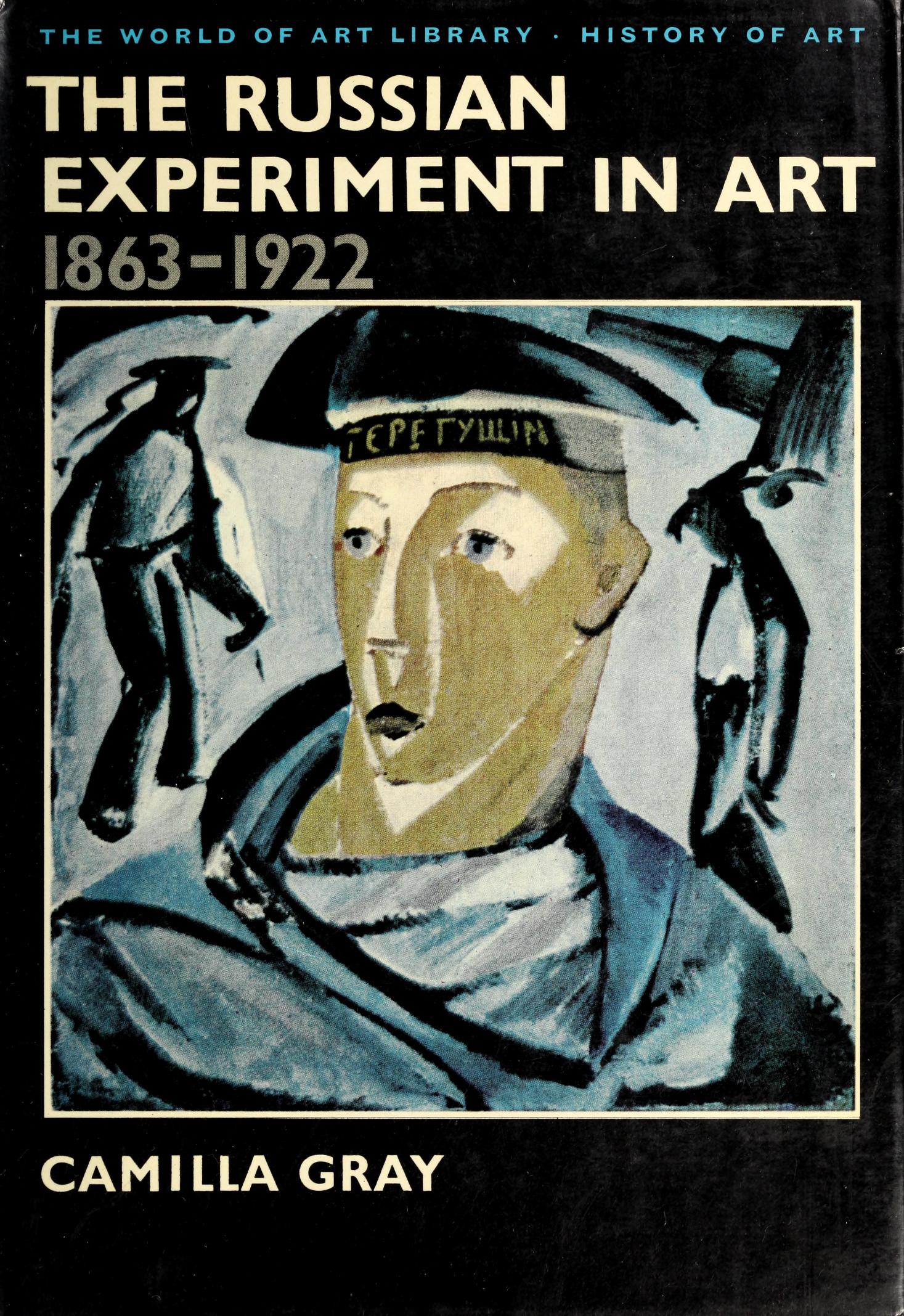Camilla Gray: The Russian Experiment in Art, 1863-1922 (1962–) [EN, SC]
Filed under book | Tags: · art, art criticism, art history, avant-garde, constructivism, cubism, futurism, graphic design, painting, russia, sculpture, suprematism, theatre, typography

When the original edition of this book was published, John Russell hailed it as a ‘massive contribution to our knowledge of one of the most fascinating and mysterious episodes in the history of modern art.’ It still remains the most compact survey of sixty years of creative dynamic activity that profoundly influenced the progress of Western art and architecture.
Publisher Thames and Hudson, 1962, 1970
Revised and enlarged edition by Marian Burleigh-Motley, 1986
ISBN 0500202079, 9780500202074
324 pages
Reviews: Wladimir Weidlé (Slavic Review 1963), Vyacheslav Zavalishin (Russian Review 1963), Nina Juviler (Slavic and East European Journal 1964).
PDF (1970 US edition, 45 MB; added on 2014-3-2)
PDF (1971 UK edition, 111 MB, no OCR; added on 2018-11-4)
PDF (1986 UK edition, 35 MB, no OCR; updated on 2012-7-17)
PDF (Serbo-Croatian, 1978, 28 MB, added on 2024-2-17)
Yve Alain Bois, Rosalind E. Krauss: Formless: A User’s Guide (1996/1997)
Filed under book | Tags: · aesthetics, art, art criticism, art history, entropy, form, kitsch, painting, photography

“In a work that will become indispensable to anyone seriously interested in modern art, Yve-Alain Bois and Rosalind Krauss convincingly introduce a new constellation of concepts to our understanding of avant-garde and modernist art practices. Formless constitutes a decisive and dramatic transformation of the study of twentieth-century culture. Although it has been over sixty years since Georges Bataille undertook his philosophical development of the term informe, only in recent years has the idea of the “formless” been deployed in theorizing and reconfiguring the very field of twentieth-century art. This is partly because that field has most often been crudely set up as a battle between form and content, whereas “formless” constitutes a third term that stands outside the opposition of form and content, outside the binary thinking that is itself formal.
In Formless, Bois and Krauss, two of the most influential and respected art historians of our time, present a rich and compelling panorama of the formless. They map out its persistence within a history of modernism that has always repressed it in the interest of privileging formal mastery, and they assess its destiny within current artistic production. In the domain of practice, they analyze it as an operational tool, the structural cunning of which has repeatedly been suppressed in the service of a thematics of art. Neither theme nor form, formless is, as Bataille himself expressed it, a “job.” The job of Formless is to explore the power of the informe. A stunning new map of twentieth-century art emerges from this innovative reconceptualization and from the brilliantly original analyses of the work of Jackson Pollock, Andy Warhol, Cy Twombly, Lucio Fontana, Cindy Sherman, Claes Oldenburg, Jean Dubuffet, Robert Smithson, and Gordon Matta-Clark, among others.”
First published as L’Informe: mode d’emploi, Centre Georges Pompidou, Paris, 1996.
Publisher Zone Books, 1997
ISBN 0942299434, 9780942299434
304 pages
PDF (updated on 2013-1-15)
Comments (3)Andrew Benjamin: Writing Art and Architecture (2010)
Filed under book | Tags: · aesthetics, architecture, art, art criticism, design, painting, sculpture

“In his new book, the philosopher Andrew Benjamin turns his attention to architecture, design, sculpture, painting and writing. Drawing predominantly on a European tradition of modern philosophical criticism running from the German Romantics through Walter Benjamin and beyond, he offers a sequence of meditations on a diverse ensemble of works and themes: on the library and the house, on architectural theory, on Rachel Whiteread, Peter Eisenman, Anselm Kiefer, Peter Nielson, David Hawley, Terri Bird, Elizabeth Presa and others.
In Benjamin’s hands, criticism is bound up with judgment. Objects of criticism always become more than mere documents. These essays dissolve the prejudices that have determined our relation to aesthetic objects and to thought, releasing in their very care and attentiveness to the ‘objects themselves’ the unexpected potentialities such objects harbour. In his sensitivity to what he calls ‘the particularity of material events’, Benjamin’s writing comes to exemplify new possibilities for the contemporary practice of criticism itself.”
Publisher: Re.press, Melbourne, 1 October 2010
Transmission series
ISBN: 9780980668360 (pbk. with colour images)
ISBN-ebook: 9780980668377
Creative Commons BY-NC-SA 3.0 license
170 pages

